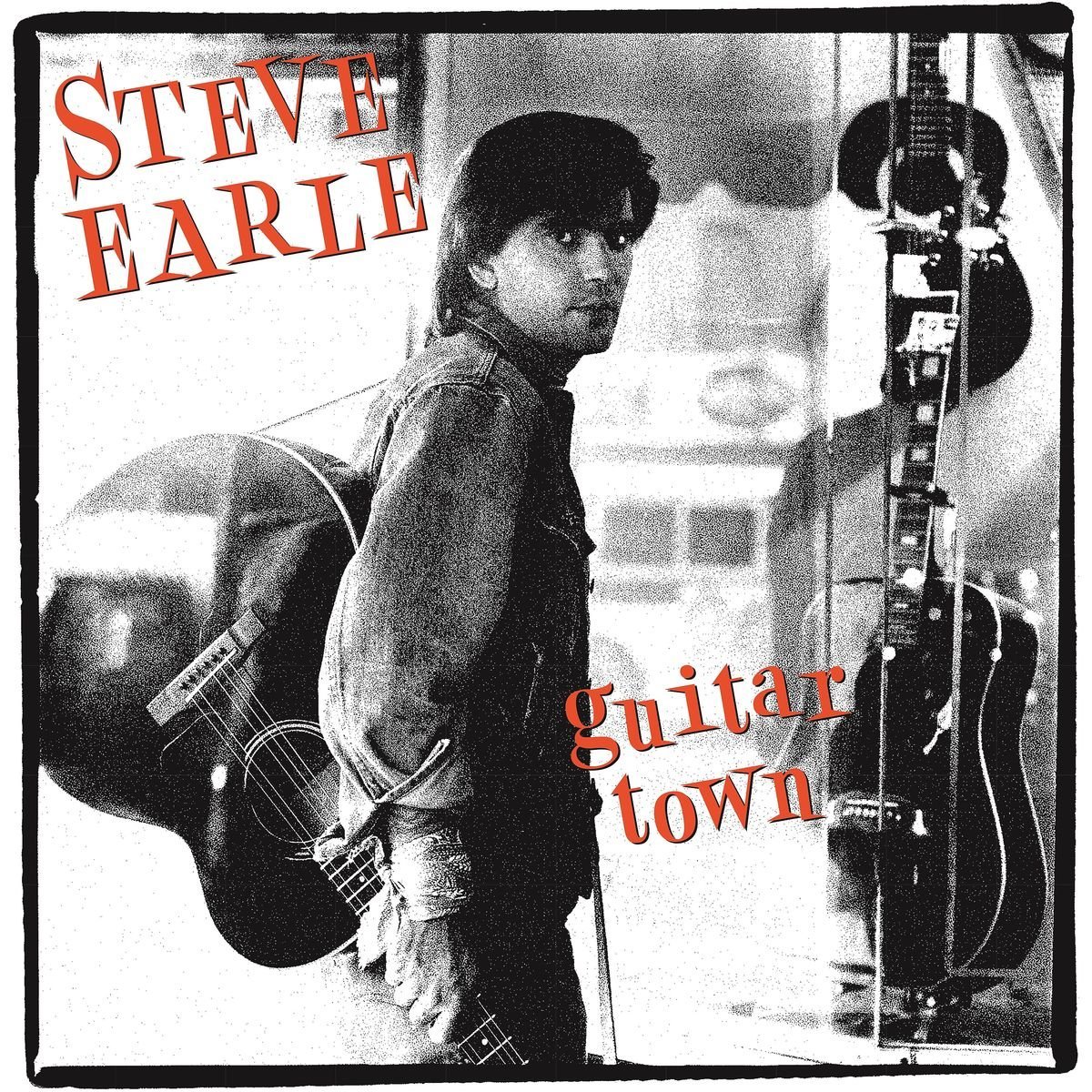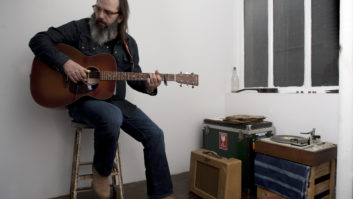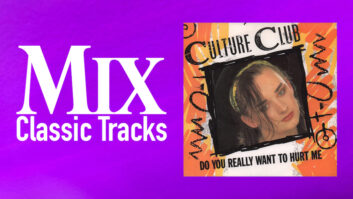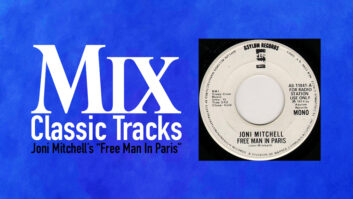With breathtaking songwriting and raw rocking guitar, Steve Earle’s first album for MCA ignited what the artist cleverly called the “Great Credibility Scare of the ’80s,” when brilliant tracks by unconventional singers invaded the charts. In this month’s Classic Tracks, we take a look at sessions for the entire album, which included not only the Top 10 title track, but unforgettable hits such as “Hillbilly Highway” and “Goodbye’s All We’ve Got Left,” and heartbreakers like “My Old Friend the Blues” and “Little Rock ’n’ Roller.”
Guitar Town was co-produced by bassist/arranger Emory Gordy and keyboardist/producer Tony Brown. Today we know Brown as the hitmaking producer of George Strait, Reba McEntire, Vince Gill and others. However, in 1986, Brown’s A&R/production career was just starting to pick up steam.

“I had been a keyboard player with the Oak Ridge Boys for a while, and after that I went to work at record companies: RCA first and then MCA,” Brown explains. “But I stayed a writer for Silverline/Goldline Music Publishing. Steve Earle was one of the writers there. At the time, he was signed to CBS/Columbia and they were trying to position him as a rockabilly kind of act.
“Well, this one day, Noel Fox [of the Oak Ridge Boys], who was the head of the publishing company, said to me, ‘I’m taking some writers down to Gulf Shores for the weekend—Jimbeau Hinson and Steve Earle—and if you want to come along you can.’
“We were down there for four or five days, and Steve was writing all these songs that he was planning to play for Columbia because it was coming to the time when the label would pick up his option or not. So, I heard ‘Guitar Town’ and ‘My Old Friend the Blues,’ and I thought, ‘This guy is the next Waylon.’ I said, ‘Man, these songs are awesome.’ He said, ‘The label’s not gonna like it. They want me to do this Stray Cats thing.’”
Brown tried to convince Earle not to reveal his best songs to the Columbia execs, hoping that the label would decline Earle’s option and Brown could bring him to MCA.
“Steve said, ‘I’ve got to go in and play the songs I’ve written. I can’t lie to ’em. But they’re not gonna like it,’” Brown says. Earle was right; Columbia passed.
So, Brown took Earle’s songs to Jimmy Bowen at MCA. “I played Bowen the demos of ‘Guitar Town,’ ‘Hillbilly Highway’ and ‘My Old Friend the Blues,’ and he said, ‘I can’t understand a word he’s saying. Go cut me some demos where I can understand one word, and maybe I’ll consider it,’” Brown recalls.
“I was scared of what Steve would say when I told him that, but he said, ‘Well, let’s do it. He’s paying for it.’” So, Brown took Earle, a backing band and a young engineer named Chuck Ainlay to the Oak Ridge Boys’ studio in Hendersonville to recut the demos.
A Profile of Steve Earle
“The sound of those demos is pretty close to what we recorded on the album,” Brown says, “Steve arranged all the demos with [guitarist] Richard Bennett and laid it out like a sketch of what he wanted the record to sound like. This time Bowen said, ‘Okay, man. I’m considering it. Now one more thing: You gotta get his teeth fixed. I’ll pay for it,’ because Steve had these rotten teeth. I didn’t know what Steve would say, but he went, ‘Oh, man, I’ve been wanting to get these fixed for a long time!’”
With Bowen’s demands satisfied, the project moved into Back Stage Studio within the Sound Stage Studios facility. The group that assembled to work with Earle included Bowen, Gordy, Bennett, Ainlay, pedal steel player Bucky Baxter, organist/keyboardist Ken Moore, drummer/vocalist Harry Stinson, and piano/synth player John Jarvis.
“Harry Stinson had moved from L.A. to Nashville and he had been getting a lot of work as a background singer and as a drummer,” says Ainlay, who had moved to Music City from Indiana to attend Belmont University in 1975. “John Jarvis had moved from L.A., too, and he was kind of the hip new keyboard player. Richard Bennett had been Neil Diamond’s guitar player. None of these guys were ‘Nashville,’ and I wasn’t considered ‘Nashville,’ either,” “None of us knew a whole lot about country music. We were forging new territory based on ignorance, basically.”
The main tracking room of Back Stage was quite small in ’86, comprising a piano room that barely fit a grand and a Leslie, a vocal booth for Earle, an air-lock space for guitar amps, and the main tracking space, which Ainlay estimates measured about 25 by 20 feet. “That became my studio later on, and it’s a beautiful studio now, but we were crammed in there,” Ainlay recalls.
Basic tracks began with a scaled-back rhythm section of Stinson, Bennett, Gordy, Jarvis on piano, and Earle. Everything was captured via the pre’s in the studio’s Neve 8068 console to a new Mitsubishi digital machine.
“I had done an all-digital album on Deborah Allen previously, and that caught Jimmy Bowen’s attention,” Ainlay explains. “We had the 3M digital system at The Castle where I was the chief engineer, and that Deborah Allen record was the first album done in Nashville that was recorded and mixed in multichannel digital and released on CD.
Steve Earle’s So You Wanna Be An Outlaw: Marking Musical Influences and Milestones
“I showed Jimmy how cool it was, and he leapt in. He commanded so much studio time in town, and everybody wanted his business, so when he demanded that studios buy these 32-track Mitsubishis, they all bought them.”
Ainlay recalls few of the microphone choices he made during basic tracking, other than Earle’s Neumann U47 vocal mic, and a DI for Gordy’s bass. However, listening back today, he’s able to make a few observations on the drum kit:
“I probably didn’t use any room microphones then because the room wasn’t big enough,” Ainlay notes. “Presumably, I would have had [AKG] 451s on overheads, a [Shure] 57 on snare top. It sounds like there’s a high tom and a floor tom, and they sound like Sennheiser 421s. The bass drum is very muffled-sounding, so I don’t think that was a 421; it may have been an [Electro-Voice] RE20.”
Some of Earle’s vocals, backing vocals, pedal steel parts by Baxter and guest Paul Franklin, as well as the Farfisa and other keyboards played by Ken Moore were overdubbed.
But what stands out most in Ainlay’s memory is the guitar processing that he and Bennett did together: “We would start work about 2 o’clock with Steve and cut two or three tracks during the day,” Ainlay says. “Then the next morning Richard and I would roll into the studio. I had gotten a new Drawmer 1960—a tube compressor that had an instrument-input section. You could put guitar straight into it, and it had an insert so you could patch outboard gear and loop it into the compressor.
“Around that time, there was a little guitar effects processor that a lot of people in L.A. were using called Rockman. It was kind of like a Walkman-sized cassette player that you plug into and you got this big processed wad of sound, but it wasn’t really good-sounding,” Ainlay continues. “My idea was, let’s take this compressor and loop through all the outboard gear in the studio and create our own high-quality guitar processor. It was very experimental.
Steve Earle: A Maverick on Music Row
“I don’t think Richard Bennett was considered one of the producers at the beginning of the project, but all that work on the guitars got him an associate producer credit on the record.”
After about five days of basic tracking, the Guitar Town team moved over to The Castle to mix on that studio’s SSL 4000E console. “It was your classic ‘cut on a Neve, mix on an SSL’ that people were doing in those days,” Ainlay says. “I had also introduced Bowen to mixing on an SSL and VCA automation. Nashville pretty quickly went from being a Neve town to being more of an SSL town.”
Ainlay also recalls that Bowen’s allowance was generous in terms of renting outboard gear. “We had AMS reverbs, [Eventide] Harmonizers, Lexicon delays and plate reverbs. Just listening, I can tell the Lexicon 224 was a big part of it. It blows my mind when I hear it now—there’s a fair bit of reverb on that record!”
Earle, Bennett, Gordy and Brown all sat in with Ainlay during the mix. “It was a fairly organic album, other than that guitar processing that we did,” Ainlay says. “The album, for me, lives on the brilliance of his vocals and his songwriting, and just his take on life at the time. And the fact that everybody who was performing on the record was from somewhere else and none of us had a clue what country music was supposed to be. Add all those ingredients together and you get Guitar Town.”
The Guitar Town album debuted on Billboard’s Top Country Albums chart at Number One and the song “Guitar Town” went to Number 7. The record not only launched Earle’s brilliant career but propelled Ainlay and Brown on their paths.
“Chuck Ainlay was a second at SoundLab when I was just playing on demos,” Bowen recalls. “Our careers paralleled each other. We finished the record and, boy, it really resonated around town. Steve was not only a critical darling, but he brought back a sound that was fresh, not slick.
“I think about all the albums I’ve cut on George Strait. Wynonna, Reba—I made money on those records. But to this day I think the thing that shapes people’s opinion of my production skills is Guitar Town.”







